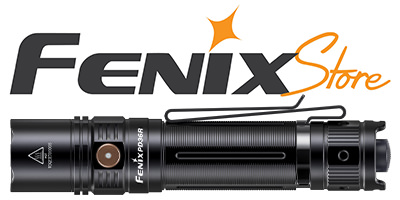You are using an out of date browser. It may not display this or other websites correctly.
You should upgrade or use an alternative browser.
You should upgrade or use an alternative browser.
LED colors
- Thread starter notos&w
- Start date
 Help Support Candle Power Flashlight Forum
Help Support Candle Power Flashlight Forum
Yes and no...
Blue LEDs take more power than Red LEDs. Blue LEDs are "brighter" though. Red LEDs are said (Although there is debate on this) to preserve night vison better. UV LEDs infact do produce odd colored light that makes hard to identify objects (some) easy to see. Infrared LEDs make it possible to control your A/V system from across the room...
White is best for general use.
Blue LEDs take more power than Red LEDs. Blue LEDs are "brighter" though. Red LEDs are said (Although there is debate on this) to preserve night vison better. UV LEDs infact do produce odd colored light that makes hard to identify objects (some) easy to see. Infrared LEDs make it possible to control your A/V system from across the room...
White is best for general use.
EMPOWERTORCH
Enlightened
There are various postings on this subjec posted elsewhere but I will try and summarise.
Broadly speaking, LED's are divided into two colour groups
Red, Orange, yellow, yellowish green. These make up the arsenide group. All these LED's operate at voltages well within the remit of a 2 cell torch, with voltages ranging from 1.8V for red and about 2.2V for yellowish-green. All the colours in this series are available as super high bright LED's. The yellowish-green LED's though are less efficient, even though they are popular as LCD and keypad lights in mobile phones. This is probably due to the LED substrate in yellowish-green LED's being less transparent.
The second group are the Nitrides:
Pure Green, Cyan, Blue, purple and white.
The Nitride LED's are comparitively recent additions to the LED spectrum. Recent examples of the nitride LED's are vry efficient indeed! Cyan is interesting, as it 555nm wavelength provokes maximum eye response, therefore any torch or lamp emitting this frequency will light up the environment very brightly. This colour also happens to be the coloyur og the world's most energy-efficient solid state light sources - a double bonus for Cyan.
White LED's are simply blue LED's gooped in a yellow-emitting phosphor, so that some of the LED's output is downconverted to yellow, resulting in white light. The downconversion process isn't 100% efficient so white LED's aren't always as bright as thier monochromatic counterparts. Although much development has gone into the production of white LED torches, the cyans will always outshine them. White is most useful where accurate colour rendering is really important, but must be considered as less bright.
Broadly speaking, LED's are divided into two colour groups
Red, Orange, yellow, yellowish green. These make up the arsenide group. All these LED's operate at voltages well within the remit of a 2 cell torch, with voltages ranging from 1.8V for red and about 2.2V for yellowish-green. All the colours in this series are available as super high bright LED's. The yellowish-green LED's though are less efficient, even though they are popular as LCD and keypad lights in mobile phones. This is probably due to the LED substrate in yellowish-green LED's being less transparent.
The second group are the Nitrides:
Pure Green, Cyan, Blue, purple and white.
The Nitride LED's are comparitively recent additions to the LED spectrum. Recent examples of the nitride LED's are vry efficient indeed! Cyan is interesting, as it 555nm wavelength provokes maximum eye response, therefore any torch or lamp emitting this frequency will light up the environment very brightly. This colour also happens to be the coloyur og the world's most energy-efficient solid state light sources - a double bonus for Cyan.
White LED's are simply blue LED's gooped in a yellow-emitting phosphor, so that some of the LED's output is downconverted to yellow, resulting in white light. The downconversion process isn't 100% efficient so white LED's aren't always as bright as thier monochromatic counterparts. Although much development has gone into the production of white LED torches, the cyans will always outshine them. White is most useful where accurate colour rendering is really important, but must be considered as less bright.
Ratso
Enlightened
I guess its mostly just the "coolness" factor. Other than red, green, blue, and white, many other colors are made just "cause we can". You will see than mostly multiple color choices are in key chain lights. A purple keychain light could be "cooler" than just plain old white, etc.
Red on the other hand is used to preserve night vision because your eyes are least sensitive to red at night.
Some say green or turquoise is better, but from my experience, 99% of astronomers, and the military spec, I find red better for ABSOLUTE night vision perservation, while Turquoise or green is great for keeping your pupils dilated but not for absolute night vision.
Green is used for cockpits and other places where you don't want to overload your night vision electornics, to prevent distraction or being "too bright" because green is not detected as easily as red or white by night vision goggles.
Blue (from what I've heard) can detect bruises and body fluids for forensics, as well as some types of chemicals (Air Condition fluid?)
Red on the other hand is used to preserve night vision because your eyes are least sensitive to red at night.
Some say green or turquoise is better, but from my experience, 99% of astronomers, and the military spec, I find red better for ABSOLUTE night vision perservation, while Turquoise or green is great for keeping your pupils dilated but not for absolute night vision.
Green is used for cockpits and other places where you don't want to overload your night vision electornics, to prevent distraction or being "too bright" because green is not detected as easily as red or white by night vision goggles.
Blue (from what I've heard) can detect bruises and body fluids for forensics, as well as some types of chemicals (Air Condition fluid?)
EMPOWERTORCH
Enlightened
purple LED's are very useful in testing of banknotes for forgeries. £5, £10 and £20 notes all contain watermarks in pigments that fluoresce in purple and UV light. These watermarks are very hard to see in white light, but really shine out in purple light.
A purple photon can be used to check bank notes.
Much more compact than those fluorescent tube UV lights you can buy, and practica;l because purple is visible more than UV so normal torch use is possible!
A purple photon can be used to check bank notes.
Much more compact than those fluorescent tube UV lights you can buy, and practica;l because purple is visible more than UV so normal torch use is possible!
